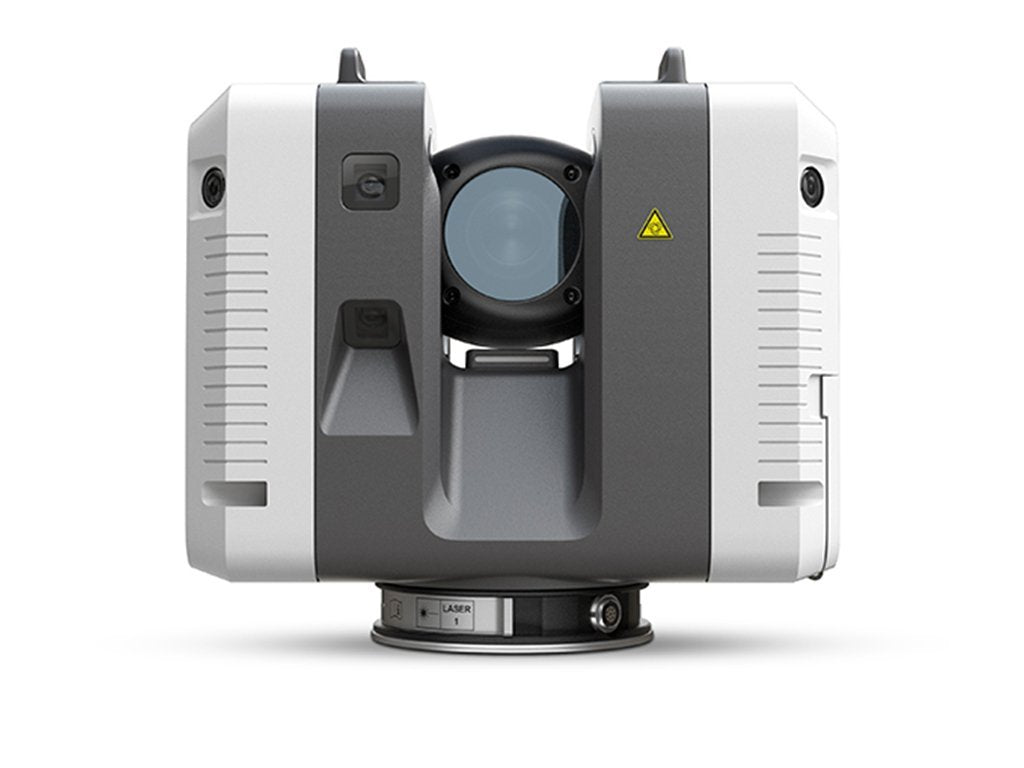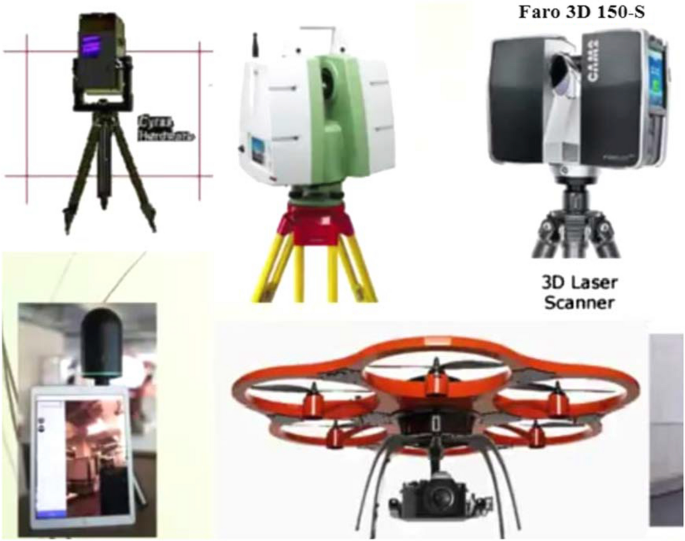Enhancing Production Processes: The Impact of 3D Laser Scanning on Quality Assurance
3D laser scanning modern technology is changing quality assurance in production. By supplying exact dimensions and high-resolution data, it makes it possible for suppliers to determine variances from specs with simplicity. This development not only streamlines inspection processes yet likewise improves operational performance. 3D Scanning. The implementation of this modern technology comes with its own collection of challenges. Discovering these elements reveals the wider ramifications for markets and the future landscape of manufacturing

Recognizing 3D Laser Scanning Innovation
Although 3D laser scanning modern technology has evolved significantly in the last few years, its basic concept continues to be straightforward: capturing the accurate geometry of items making use of laser light beams. This technology employs laser light to measure distances in between the scanner and numerous factors on a things's surface. The data gathered is then processed to create a detailed 3D model, accurately reflecting the dimensions and contours of the checked things.
Normally, 3D laser scanners can be classified into two main kinds: call and non-contact scanners. Get in touch with scanners physically touch the object to collect dimensions, whereas non-contact scanners utilize laser beam of lights to capture information from a range. The flexibility of this innovation allows its application across numerous sectors, including building, design, and production. Its ability to generate high-resolution designs facilitates top quality control, reverse engineering, and quick prototyping, eventually boosting design accuracy and performance in production procedures.
Advantages of 3D Laser Scanning in Manufacturing
As manufacturers seek to improve efficiency and precision in their processes, the benefits of 3D laser scanning have actually ended up being progressively evident. This ingenious technology enables for highly precise and quick dimensions of complex geometries, significantly reducing the time needed for quality checks. By catching thorough data, makers can identify inconsistencies early in the production process, therefore minimizing waste and remodel prices.
3D laser scanning facilitates much better style recognition, making it possible for engineers to contrast as-built problems with initial specifications. This ability ensures that any type of inconsistencies are promptly dealt with, improving total item quality. On top of that, the modern technology sustains the production of electronic doubles, which can be utilized for simulations and procedure optimizations. As an outcome, suppliers not just increase their operational efficiency however likewise improve their affordable benefit out there. Generally, the assimilation of 3D laser scanning stands for a transformative action towards accomplishing higher standards in manufacturing quality assurance.
Combination of 3D Laser Scanning Into Quality Assurance
Incorporating 3D laser scanning right into quality assurance processes improves the precision and effectiveness of assessments throughout manufacturing. This technology enables manufacturers to record detailed, high-resolution information of parts and settings up, enabling for specific dimensions and contrasts against design specifications. By utilizing 3D laser scanning, organizations can identify deviations from resistances better, which is vital for keeping item integrity.

Real-World Applications and Study
Real-world applications of 3D laser scanning in producing demonstrate its transformative influence throughout different markets. Aerospace business utilize this modern technology to carry out exact assessments of elements, ensuring they fulfill strict safety criteria. A significant case entailed a leading aircraft manufacturer that employed 3D laser scanning to simplify its quality assurance processes, significantly reducing examination times and errors.
In the automotive market, producers have actually executed laser scanning to develop digital doubles of their cars, making it possible for real-time modifications throughout production. One automotive company reported a 30% decrease in rework expenses after incorporating this technology into their setting up lines.
Moreover, in the customer goods market, firms are utilizing 3D laser scanning for rapid prototyping, permitting quicker models and enhanced product designs. These applications illustrate just how 3D laser scanning not only enhances precision yet also improves performance and innovation across several address manufacturing domains.
Conquering Obstacles in Implementation
Executing 3D laser scanning in producing presents numerous obstacles that companies have to navigate to completely understand its advantages. One considerable obstacle is the first price of tools and software, which can discourage companies from adopting this modern technology. Additionally, integrating 3D laser scanning right into existing process needs overcoming resistance to alter amongst employees, necessitating complete training programs to ensure efficiency. Data administration likewise presents an obstacle, as the high volume of information generated by 3D scanning must be effectively refined and assessed to acquire workable understandings. Additionally, compatibility problems with tradition systems may hinder smooth assimilation, requiring prospective upgrades or modifications. Attending to these difficulties is important for manufacturers intending to boost high quality control and optimize manufacturing procedures. By creating clear approaches for training, investment, and data monitoring, business can mitigate these barriers and release the transformative potential of 3D laser scanning in their procedures.
Future Patterns in 3D Laser Scanning for Production
As producing remains to develop, the assimilation of 3D laser scanning with boosted automation is expected to change production procedures. Enhanced information analytics will play an essential function in maximizing operations and enhancing high quality control. These fads highlight the capacity for better effectiveness and precision in making atmospheres.

Boosted Automation Integration
Although the integration of automation in production has actually been gradual, the future of 3D laser scanning is poised to accelerate this pattern substantially. As making procedures end up being progressively complicated, the demand for exact, real-time dimensions grows. 3D laser scanning technology provides automated data capture, reducing labor prices and decreasing human mistake. This combination allows manufacturers to streamline high quality control processes, making it possible for quick detection of discrepancies in production. In addition, the placement of 3D laser scanning with robotics and automated systems assists in seamless procedures, improving general efficiency. As manufacturers embrace these innovative modern technologies, they can expect improved precision and efficiency, positioning themselves competitively in a quickly developing market. The harmony in between Visit Your URL automation and 3D laser scanning marks a substantial jump ahead in manufacturing innovation.
Boosted Data Analytics
The assimilation of automation has led the way for advancements in data analytics within the domain name of 3D laser scanning. Makers are increasingly leveraging innovative algorithms and equipment knowing strategies to evaluate substantial datasets produced by laser scans. This boosted data analytics ability enables real-time tracking of making processes, making it possible for the identification of issues and discrepancies better than standard approaches. Predictive analytics can anticipate possible issues, substantially reducing downtime and improving total efficiency. Moreover, the capacity to visualize data in three measurements gives deeper insights into manufacturing process, cultivating better decision-making. As 3D laser scanning technology proceeds to progress, the duty of information analytics will end up being increasingly vital in driving technology and maintaining affordable advantage in manufacturing.
Regularly Asked Concerns
What Industries Advantage the A Lot Of From 3D Laser Scanning?
The markets that benefit most from 3D laser scanning include production, building and construction, aerospace, auto, and medical care. These markets use the innovation for precision measurements, quality control, and reliable style processes, substantially enhancing general operational effectiveness.
Just How Does 3D Laser Scanning Contrast to Typical Measurement Techniques?
3D laser scanning offers greater precision and rate contrasted to typical measurement approaches. It records thorough geometries swiftly, decreasing human mistake and assisting in better evaluation, which eventually enhances general quality assurance in numerous industries.
What Is the Price of Carrying Out 3D Laser Scanning Technology?
The expense of implementing 3D laser scanning modern technology varies substantially, usually varying from $10,000 to $100,000, depending upon equipment, training, and software application. Organizations linked here needs to weigh these costs versus potential effectiveness and top quality improvements.
Are There Details Software Demands for 3D Laser Scanning?
Yes, 3D laser scanning calls for specific software application, consisting of information processing and modeling applications. Typical selections incorporate CAD software, point cloud handling devices, and specialized applications that help with the combination and evaluation of checked information for perfect results.
Just how Lengthy Does a Typical 3D Laser Scanning Process Take?
A common 3D laser scanning process can take anywhere from a couple of mins to numerous hours, depending on elements like the size of the item, intricacy of the setting, and called for degree of information for precision.
3D laser scanning modern technology is changing quality control in manufacturing. 3D laser scanning technology has evolved significantly in recent years, its fundamental principle remains straightforward: capturing the accurate geometry of items using laser beams. Integrating 3D laser scanning into quality control processes boosts the precision and performance of assessments throughout production (3D Scanning). 3D laser scanning innovation provides automated data capture, reducing labor costs and decreasing human mistake. The expense of carrying out 3D laser scanning innovation varies considerably, typically varying from $10,000 to $100,000, depending on tools, software application, and training